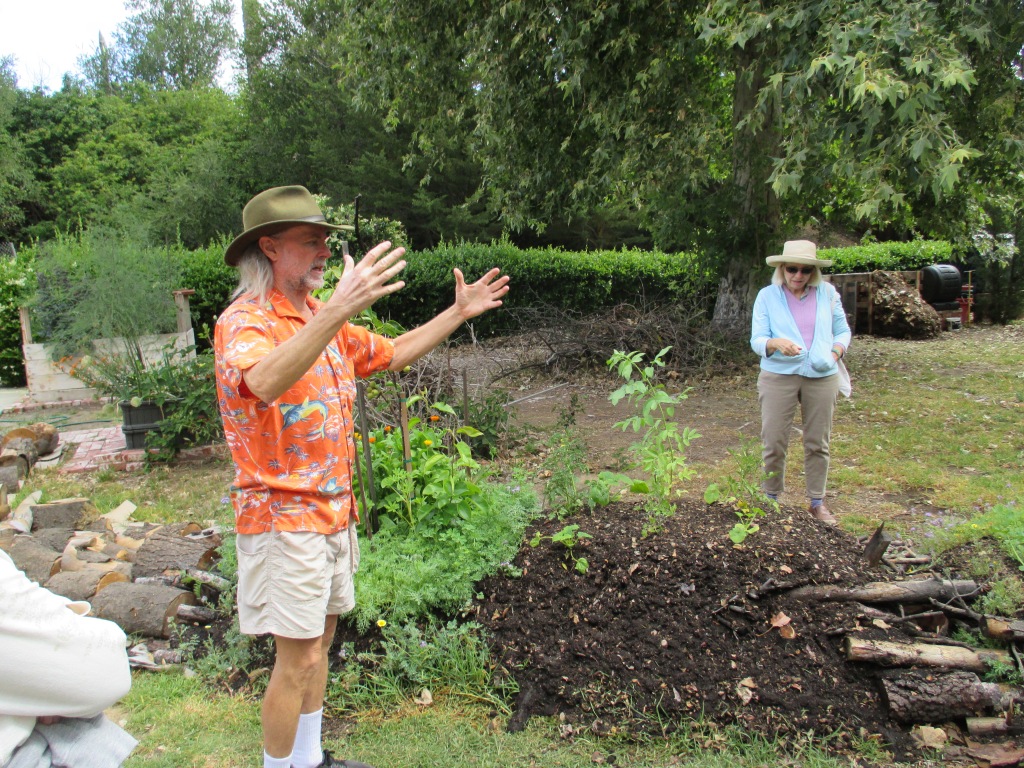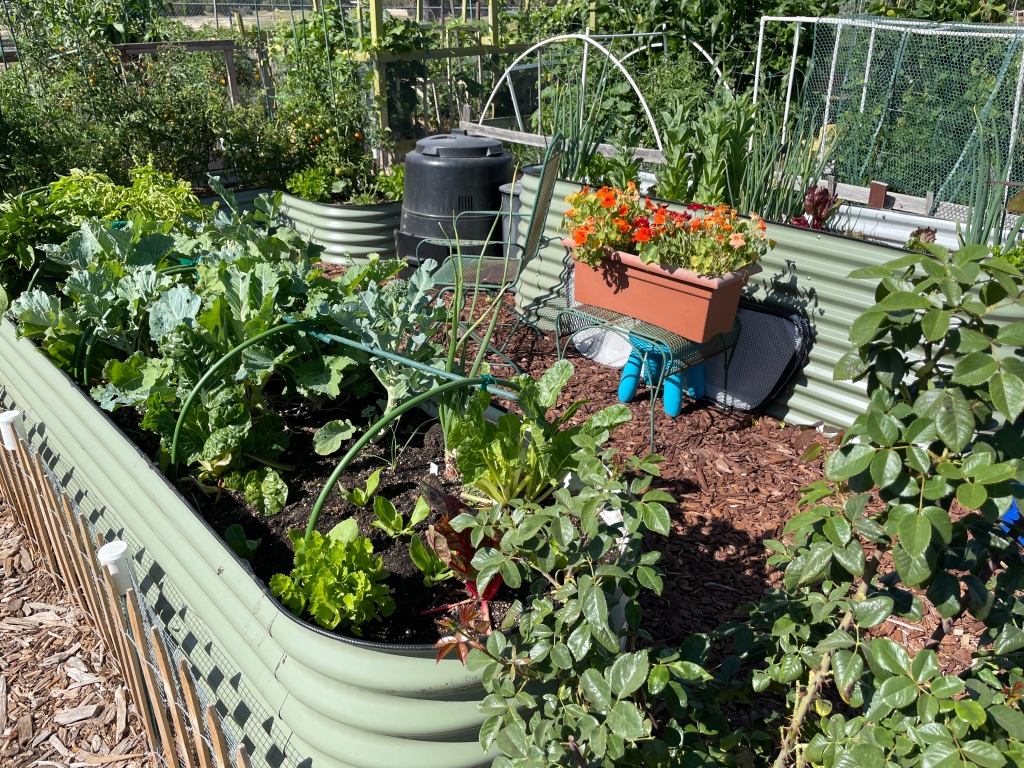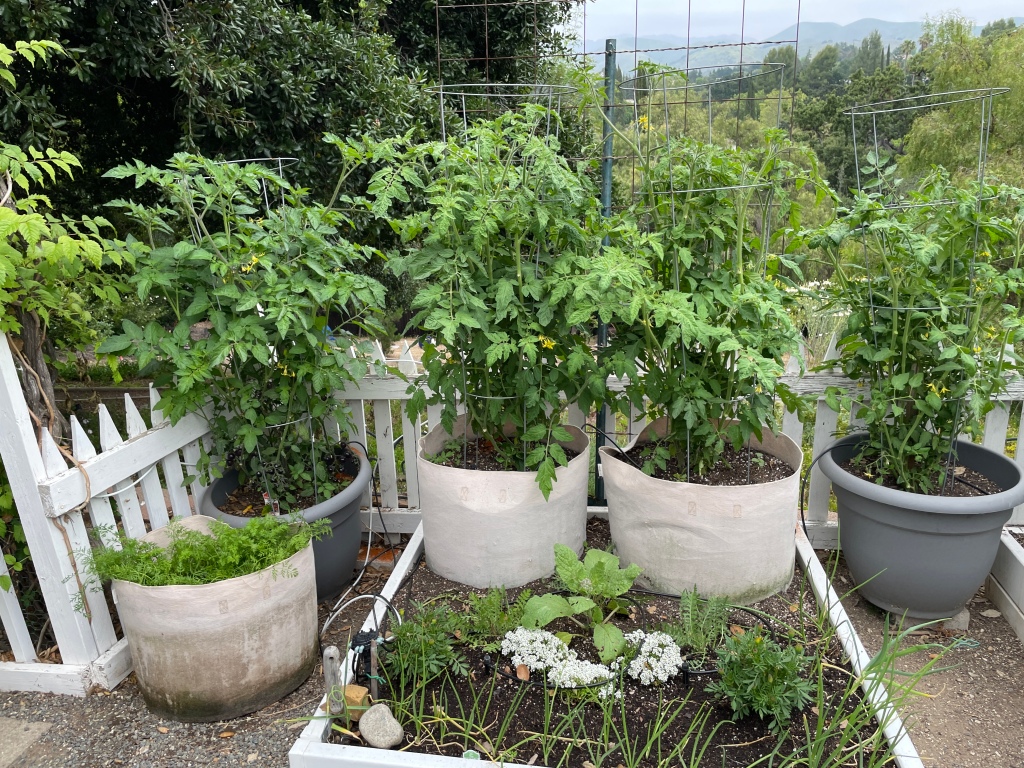
Organic permaculture gardening has the power to restore ecosystems, promote soil health, and create a sustainable future for generations. Several of our Organic Garden Club members, like Dr. Jeff Bass, have made hugelkutur mounds, a centuries old permaculture technique, in their backyard, where they started with tree logs, dirt, compost, sticks, twigs, and more compost to build organic living soil. They planted fruit trees, herbs, wild flowers, and veggies in their mounds, putting nutrients into the soil, like those developed in an old growth forest. You can use regenerative organic gardening techniques to invigorate the soil in your backyard. By planting native plants to attract pollinators, designing an area to hold rainwater in the soil, and using lots of compost and mulch, you can develop rich vibrantly alive soil and create a sustainable food garden.

You are what you eat. Eating fruits and vegetables is the number one habit for healthy living and is the most delicious when fresh, local, organic, and in season. Food weaves the web of life through the nutrition cycle – from the soil and the soil microbes, to plants, to you, and back to the soil in the form of compost. Beneficial living soil microbes in the compost purify our groundwater, decompose dead animals and plants, hold the soil in place, and help feed the plants that recycle our air. Growing an organic food garden means you get diversity in your diet, improve your immune system, get exercise in fresh air, and release stress.

Growing your food in raised beds give you a longer growing season, easier on your back gardening, healthier soil and plants, and more availability. These metal raised garden beds were filled with wood chips on the bottom half of the beds. Next green pruning scraps, dried leaves, and cardboard were added, followed by biochar, worm castings, and coffee grinds. Then, several bags of certified organic raised bed potting mix was pour in and topped with homemade compost. Now the raised beds are ready to plant your herbs, flowers, and veggies.

You can create an organic fruit, herb, and veggie garden in rich soil even in a small space, patio, or balcony by using vertical supports to double your growing space. Use trellises in small raised garden beds, terrace your pots on shelves, use hanging planters and railing planters to make the best use of the available sunlight. Create conditions for less pest problems and disease in a complex biological community with Intensive and Companion Interplanting of marigolds, nasturtiums, herbs, and alliums among your tomatoes, peppers, zucchini, peas, and radishes in your raised bed garden. Companion planting also attracts pollinators by closely intercropping beneficial plants of different sizes among the veggies. By planting the right herb, flower, vegetable, or fruit in the right place at the right time for your climate, you can have a year round bountiful harvest.